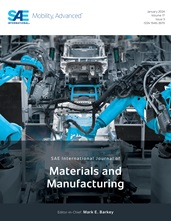This study employs computational fluid dynamics (CFD) to analyze airflow and
thermal characteristics within an agricultural tractor, focusing on operator
comfort and component safety. Initial simulations identified hotspots, such as
the brake pedals, operator platform, and hand throttle, where temperatures
exceeded acceptable limits (rise over ambient, ROA). A multi-step
approach—including sealing air leaks, adding heat insulation materials, and
optimizing the deflector guard—was implemented to mitigate excessive heat. While
these modifications significantly improved temperature conditions on the right
platform, the left brake pedal remained problematic. Further enhancements, such
as sealing an electrical socket and modifying the shroud design, effectively
reduced heat exposure. The improved shroud also led to a slight decrease in
static pressure (2.21%) and an 8.61% reduction in power consumption, improving
airflow efficiency. Although an alternative ring fan design reduced power
consumption, it increased pressure, potentially restricting airflow. Conversely,
sealing and shroud design modifications improved efficiency with a slight
decrease in static pressure (2.21%) and a small increase in air velocity (1.5%).
The findings demonstrate that strategic design modifications can enhance both
operator comfort and engine efficiency. This study highlights the potential of
CFD simulations as a powerful tool for optimizing agricultural vehicle thermal
management.
